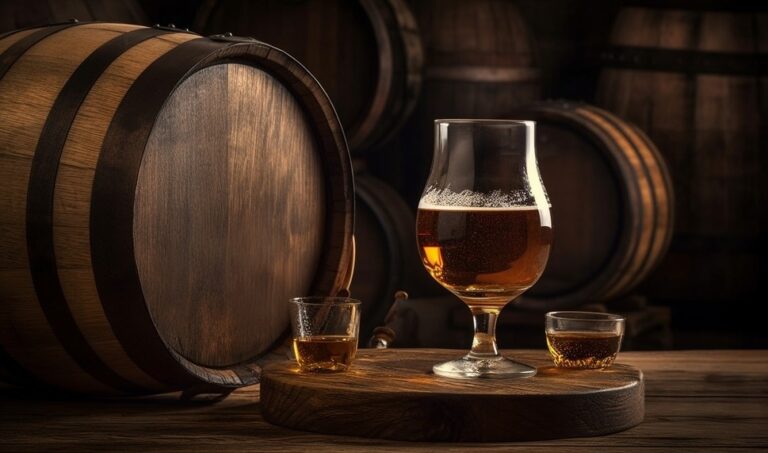The Engineering Science Behind Coffee, Beer, and Wine Production

Coffee, beer, and wine are not just beverages; they are cultural staples enjoyed by millions worldwide. Yet, behind every sip lies a complex web of engineering principles meticulously applied throughout the production process. From the careful cultivation of raw ingredients to the precise control of fermentation and packaging, the science behind coffee, beer, and wine production is as fascinating as it is essential.
Coffee Production
Coffee, often considered the fuel that powers the world, undergoes a rigorous process from bean to brew. The journey begins in the coffee plantations of countries like Brazil, Colombia, and Ethiopia.
Harvesting: The first crucial step in coffee production is the harvesting of ripe coffee cherries. This task is often labor-intensive, with skilled workers selectively picking only the ripest cherries to ensure optimal flavor.
Processing: Once harvested, coffee cherries undergo processing to extract the beans within. The two primary methods are the dry process, where cherries are dried intact before hulling, and the wet process, which involves pulping, fermentation, washing, and drying. Each method requires careful engineering considerations to optimize efficiency and quality.
Roasting: Roasting transforms green coffee beans into the aromatic and flavorful beans we recognize. Roasting machines utilize precise temperature control and airflow to achieve the desired roast profile, whether it’s light, medium, or dark. Engineers continuously refine these machines to ensure consistency and repeatability in the roasting process.
Grinding and Brewing: The final stage in coffee production involves grinding roasted beans and brewing them into a delicious beverage. Engineering principles govern the design of coffee grinders and brewing equipment, optimizing factors such as grind size, water temperature, and pressure to extract the perfect cup of coffee.
Beer Production
Beer, one of the oldest and most widely consumed alcoholic beverages, has a production process deeply rooted in science and engineering. From the malting of grains to the fermentation of sugars, every step is meticulously controlled to produce a consistent and flavorful brew.
Malting: Beer production begins with malting, where barley or other grains are germinated and then kiln-dried to produce malt. Engineering principles guide the malting process, controlling factors such as temperature, humidity, and airflow to achieve the desired level of enzyme activity and flavor development.
Mashing: During mashing, malted grains are mixed with hot water to convert starches into fermentable sugars. Mash tuns and lautering systems are engineered to optimize the extraction of sugars while minimizing the risk of grain husk tannins and other undesirable compounds.
Fermentation: Yeast fermentation is the magic that transforms sugary wort into beer. Fermentation vessels are carefully designed to control temperature, pressure, and yeast activity, ensuring consistent fermentation and flavor development. Engineers employ innovative techniques such as jacketed tanks and temperature-controlled fermentation chambers to achieve precise control over the fermentation process.
Filtration and Packaging: After fermentation, beer undergoes filtration to remove solids and clarify the liquid. Filtration systems utilize various methods, including mechanical filtration, diatomaceous earth filtration, and centrifugation, each optimized for efficiency and quality. Packaging lines are equipped with automated systems for filling and sealing bottles, cans, or kegs, ensuring product integrity and longevity during distribution.
Wine Production
Wine, often regarded as the nectar of the gods, has a production process steeped in tradition and guided by modern engineering principles. From the vineyard to the cellar, every step is carefully orchestrated to preserve the delicate flavors and aromas of the grapes.
Crushing and Pressing: The journey of wine production begins with the crushing and pressing of grapes to extract their juice. Engineers design grape crushers and presses to optimize juice extraction while minimizing damage to grape skins and seeds. Gentle pneumatic presses and modern destemming machines help preserve the quality of the juice.
Fermentation: Like beer, wine fermentation relies on yeast to convert sugars into alcohol. Fermentation tanks are engineered to provide optimal conditions for yeast activity, including temperature control, oxygenation, and nutrient supplementation. Stainless steel tanks and oak barrels are commonly used for fermentation and aging, each offering unique characteristics that influence the final wine.
Aging and Bottling: Wine aging is a critical stage where flavors and aromas mature and develop complexity. Cellar conditions are carefully controlled to ensure stable temperatures, humidity levels, and minimal light exposure. Engineers design bottling lines with precision filling and corking mechanisms to maintain product integrity and freshness.
Conclusion
Coffee, beer, and wine production are not just processes; they are a harmonious blend of art, science, and engineering. From the meticulous cultivation of raw ingredients to the controlled fermentation and packaging, every aspect of production is guided by principles of efficiency, quality, and consistency. By understanding the engineering behind these iconic beverages, we gain a deeper appreciation for the craftsmanship and innovation that go into creating the perfect brew. As technology continues to advance, so too will our ability to refine and enhance these age-old processes, ensuring that coffee, beer, and wine remain timeless pleasures for generations to come.
